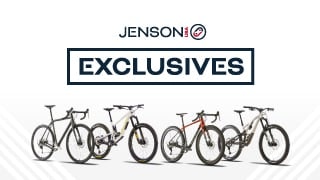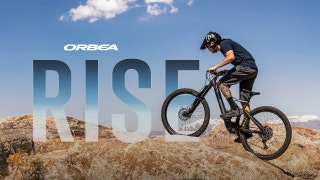Featured Brands
Recommended Products
Get free shipping, on most items, with your $50 purchase today! Same day shipping on most orders if placed by 3pm PST.
PLEASE NOTE:
This offer is only available to physical shipping addresses in the 48 continental United States (no PO Boxes), and some exclusions apply.
Oversize Charges
Some large and/or heavy items are subject to additional oversize charges that are separate from standard shipping costs.
Bike Build Process
All bikes are built, tested, tuned, and ready to ride upon shipment. The bike build process typically takes 2-3 days to complete depending on the bike model and the complexity of the build.
Stock Status
Orders for in-stock items placed by 3PM PST usually ship on the same day. Orders that include special-order or backordered items may be subject to shipping delays depending on product availability. Refer to estimated delivery times in cart when selecting shipping options.

Our Gear Advisors are Ready to Help.
Also called MTB flat pedals, platform pedals are the most basic type of cycling pedal because there is no clip-in mechanism, just a large pedal body that provides a platform for your shoe. They are most often found on kid’s bike, commuters, cruisers, and some gravity-oriented mountain bikes, where they are preferred because they allow you to bail off your bike rapidly without having to disengage a clip-in style pedal. The downside is that they are not as effective at transmitting power to your drivetrain because you are only pushing down on the pedals, and not able to pull up like you can with clipless pedals.
Mountain bike flat pedals, such as those made by Crank Brothers, Race Face, and Shimano, are usually constructed from metal. They also feature raised pins on both sides the pedal that provide extra grip when used with skate-style mountain bike shoes that have soft rubber soles. More expensive mountain bike pedals have pins that are adjustable and replaceable. These traction pins allow riders to fine tune the way the pedal feels and are adjustable with a simple allen key. Also, they are pretty resistant to rock strikes. They may also incorporate weight-lowering materials such as titanium. Some flat pedals have larger surface areas than others. This allows for more control while riding and provides a larger platform to work with. Some pedals, like the Race Face Atlas, feature a double concave shape and sealed bearings. This concave platform provides maximum grip.
Basic plastic-body platform pedals usually do not have pins, nor are they as durable as those made specifically for mountain biking. Instead, they are best used on hybrid or city bikes, when you may not even be wearing cycling-specific shoes while riding. There are also a handful of hybrid platform pedals, which are flat on one side and have a clip-in mechanism on the other side. These can be a great choice for riders new to using clip-in style pedals, or simply for those who prefer choice, such as wintertime fat bikers who may wear traditional clip-in cycling shoes some days, but opt for warmer non-cycling boots when it’s particularly cold outside.
Flats are perfect for all riding. Beginner to expert riding, trail bikes, downhill mountain bikes, you name it. The primary differences in platform pedals are weight, adjustability, and durability. And as with most cycling components as weight goes down and adjustability and durability go up, so does price. If you have any questions about platform pedals, be sure to call one of our JensonUSA Gear Advisors at 888-880-3811. They are standing by ready to help you through the decision making process.




